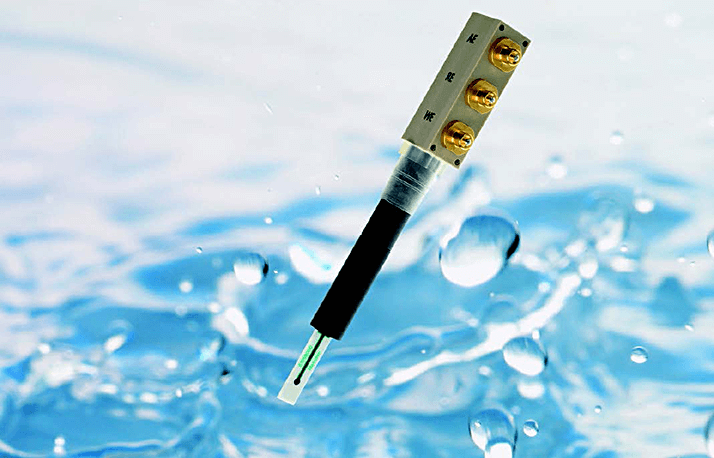Introduction
Arsenic is ubiquitous in the earth’s crust in low concentrations. However, elevated levels can be found in mineral deposits and ores that were formed due to specific geological conditions (volcanic rock, phosphate and sulfide mineral deposits). Arsenic from such deposits leaches into the groundwater in the form of arsenite (AsO33–) and arsenate (AsO43–), causing its contamination.
In addition to the arsenic originating from natural sources, industry and agriculture contribute to the contamination to a lower extent. The World Health Organization (WHO) recommends a maximum arsenic content in drinking water of 10 μg/L.


Total arsenic determination
Analysis basics
As(V) is electrochemically inactive. Therefore, to be measured, it must be reduced in situ to As(III) by nascent hydrogen. Together with the As(III) present in the sample, As(V) is electrochemically reduced to As(0) and simultaneously deposited on a gold electrode in the deposition step. In the determination step, the accumulated As(0) is reoxidized to As(III) producing the analytical signal.
Sample preparation
Usually, groundwater, drinking water, and mineral water can be analyzed directly. Water that contains low-tomedium levels of organic contamination is treated with the 909 UV Digester. 10 mL of acidified water sample (pH = 2) is mixed with 10 μL of 65% HNO3 and 50 μL of 30% H2O2, then irradiated with UV for 90 min at 90 °C.
Voltammetric analysis
10 mL of the sample is pipetted into a measuring cell and 2 mL of the supporting electrolyte (1 mol/L sulfamic acid, 0.5 mol/L citric acid, and 0.45 mol/L KCl) is added. The concentration of total As is quantitatively determined using the standard addition method with two additions of As(V) standard solution.





